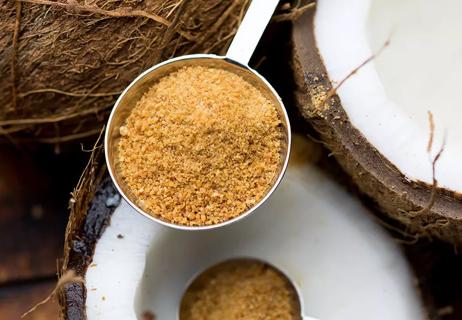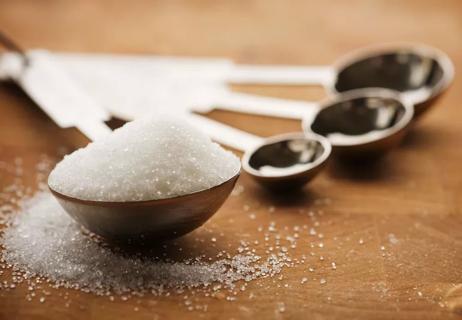Too much added sugar early in life is linked to obesity, high blood pressure and Type 2 diabetes

Sweet treats. It’s tempting for parents and caregivers to reward good behavior with them. And for grandparents to use them to see little faces light up.
Advertisement
Cleveland Clinic is a non-profit academic medical center. Advertising on our site helps support our mission. We do not endorse non-Cleveland Clinic products or services. Policy
But is sugar really that bad for kids? What’s wrong with using chocolate for potty training or keeping your kids occupied with animal crackers while grocery shopping?
We asked pediatricians Edward Gaydos, DO, and Svetlana Pomeranets, MD, to explain sugar’s role in a child’s diet.
It only makes sense that the smaller the body, the lower the amount of sugar intake recommended — but we tend to give our kids even larger portions of the sweetest stuff.
“Let’s start by looking at American Heart Association (AHA) recommendations,” says Dr. Pomeranets. The AHA recommends less than 25 grams (6 teaspoons) of sugar per day for children ages 2 to 18 years. That includes no more than 8 ounces of sugar-sweetened drinks per week.
“Children younger than 2 years should have no sugar at all,” adds Dr. Gaydos.
Why does the AHA have such stingy guidelines? Because eating lots of added sugar early in life is linked to obesity, high blood pressure and Type 2 diabetes. And those problems put children and young adults at risk for heart disease.
Plus, filling up on sugary treats leaves less room in young tummies for heart-healthy fare like fruits, veggies, whole grains and low-fat dairy products.
“I advise parents to read food labels, find ‘sugar,’ and do the math — every 4 grams of sugar equals 1 teaspoon,” shares Dr. Pomeranets.
Advertisement
For example, you’ll find about 12 grams (2 1/2 teaspoons of sugar) in:
That can add up fast, especially when kids ask for more.
Worse, a 20-ounce bottle of a typical sports drink can have upwards of 30 to 35 grams of added sugar. That’s more than an entire day’s worth of sugar. So, it might be wise to think twice before handing that sugary sports drink to your kid after a soccer game.
“The worst sugars are in processed foods, sports drinks, pop, desserts and fruit juice,” says Dr. Pomeranets, adding, “Don’t rush to introduce fruit juice — it has no nutritional value.”
The U.S. Food and Drug Administration (FDA) requires all manufacturers to clearly list all added sugars on food labels. The Nutrition Facts label on packaged foods was updated in 2016, but the changes were rolled out over the last seven years or so.
In addition to looking for those added sugars, be sure to review a product’s ingredients list for sugar by any name — including high-fructose corn syrup, dextrose, fructose, fruit juice and honey.
Dr. Gaydos suggests parents offer kids healthy choices at every meal and let them choose what their bodies tell them they need. It may be meat or vegetables first thing in the morning rather than at lunch or dinner — and that’s OK.
He explains, “Children have an innate ability to adjust their diet to their energy intake. They can self-regulate when they need protein, fat and carbohydrates.”
Both kids and adults are programmed to use hunger and fullness cues to regulate food intake. And when you’re hungry, everything tastes good.
“Coercive, restrictive and environmental cues that tell us when to eat can override our natural self-regulation so that we no longer pay attention to hunger and fullness cues,” he cautions.
Sweet treats can certainly have a place in your child’s diet, but it shouldn’t be every day. “I try to impress on parents that sweets should be given strictly as a treat, in reasonable portions, on special occasions or days,” Dr. Pomeranets says.
Dr. Gaydos adds, “Eating brings joy, but that joy should be geared toward the process of satisfying hunger and spending time with family.” And while kids’ bodies may have a good sense of what they really need, children aren’t often in control of choosing their own well-balanced diet. “But adults can and should (control sugar intake), right from the beginning,” he says.
So, if chocolate candies aren’t the best reward, how do you congratulate your child for potty training progress? “Add stickers to a chart, put marbles in a jar or find other means to reinforce good behaviors,” advises Dr. Pomeranets.
Advertisement
Looking for other ways to reduce your child’s sugar intake? Make your own homemade snacks, limit how much sugar you’ll allow per treat and start banning some of the highest offenders from your grocery list, such as sugary drinks.
And what should you say to doting grandparents and well-meaning family members? Ask in advance if they can treat kids to mandarin oranges, dried fruit or trail mix rather than ice cream, cookies or sugary cereals, she suggests.
“I try to look at it not as compromising, but as refocusing where children’s joy should come from,” encourages Dr. Gaydos.
That joy instead could come from the experience of enjoying food when they’re hungry and mealtime with family (without distractions like TV, videos or the newspaper).
It also helps when parents model good eating habits and choose to eat fruits and veggies every day, too, says Dr. Pomeranets.
There’s often a lot of chatter — some of it confusing, contradictory or even based on inaccurate conclusions — among parents and family support groups directly connecting too much sugar to hyperactivity in children.
Some sources will list half a dozen signs that your child is eating too much sugar — from moodiness and sluggishness to weight gain. While those may or may not be proof of too much sugar (along with a mouthful of cavities), they are something you’ll want to keep an eye on.
Advertisement
“There is more conjecture out there than hard science right now,” cautions Dr. Gaydos, about the long-term effects of sugar intake and behavior. Some studies demonstrate a causal relationship with depression, but then report inconsistent findings on sugar and anxiety.
Researchers are looking at the relationship between consuming foods high in refined sugar and various behaviors, including mood, activity and hyperactivity, at least in the short run. “But I’m not aware of a clinical correlation between having excessive sugar intake and ADHD,” Dr. Pomeranets clarifies. “But I understand that research is ongoing.”
She adds that while parents may see their kids becoming “hyper too quickly after a meal or snack that is high in sugar,” there isn’t an immediate risk of too much sugar affecting blood sugar levels of an otherwise healthy child.
But that risk increases over time, she says, noting that it can put the child at risk for having obesity. And obesity is a condition with many complications, including diabetes.
Whether or not you notice changes in your child’s behavior after they eat sugar, know that it’s important for their overall health to limit their sugar intake. Can it be tough to do that? Absolutely. But when you do, you’re nurturing and protecting your child’s health for the rest of their life — and that’s one of the best treats you could ever give them.
Advertisement
Learn more about our editorial process.
Advertisement

A high intake of sugar can cause an increase in ‘bad’ cholesterol and a decrease in ‘good’ cholesterol

Often labeled as ‘diabetes-friendly’ or ‘calorie-free,’ these sugar substitutes warrant caution

There is an indirect link between the sweet substance and the condition

It’s touted as a healthier alternative to cane sugar, but basically, well ... it’s still just sugar

Updated food label guidelines make it easier to track added sugars in your diet

Sugary foods don’t always taste sweet, and they may not say ‘sugar’ on the label

Don’t skip meals or go ‘cold turkey’ — eat a balanced diet and talk to your doctor instead

Fuel your body with healthy options that combine fiber-rich carbs, lean protein and healthy fats

If you’re feeling short of breath, sleep can be tough — propping yourself up or sleeping on your side may help

If you fear the unknown or find yourself needing reassurance often, you may identify with this attachment style

If you’re looking to boost your gut health, it’s better to get fiber from whole foods